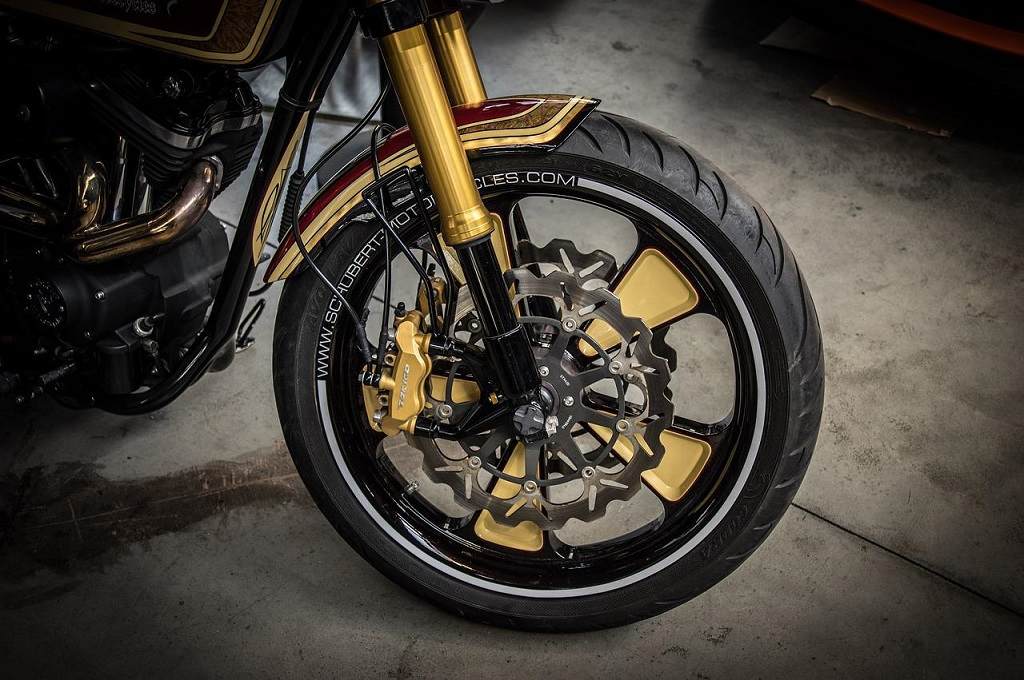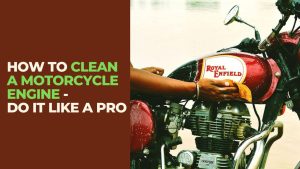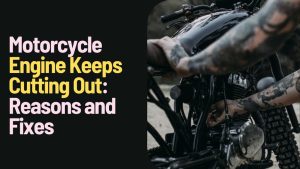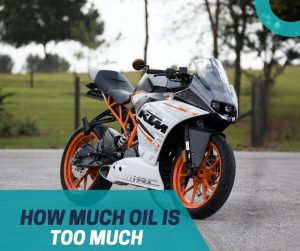Checking motorcycle tires should be a part of your routine check every time you hit the road. They must be correctly inflated and have enough tread depth to provide good traction and avoid accidents.
Your tires should also be balanced and aligned according to the manufacturer’s recommendations.
Checking Motorcycle Tires: What to Look for?
A visual inspection is enough to spot everything wrong with your motorcycle tires. You need to look for cracks, cuts, or any other damage. If you see anything that looks questionable, get it checked out by a professional.
Here are a few things to look for when you’re checking the tires:
1. Tread Depth
The ideal tread depth of a motorcycle tire is 4/32 (3.18mm) of an inch. It may not seem like much, but it’s the perfect amount of tread depth for a motorcycle tire.
Any less than 4/32 of an inch and your tire may not be able to grip the road as well as it should, which can be dangerous.
However, you can still ride a bike with 3/32 inch or 2.3mm tread depth, but it should not be any lower. A shallow tread may cause the tire to skid even in a small puddle.
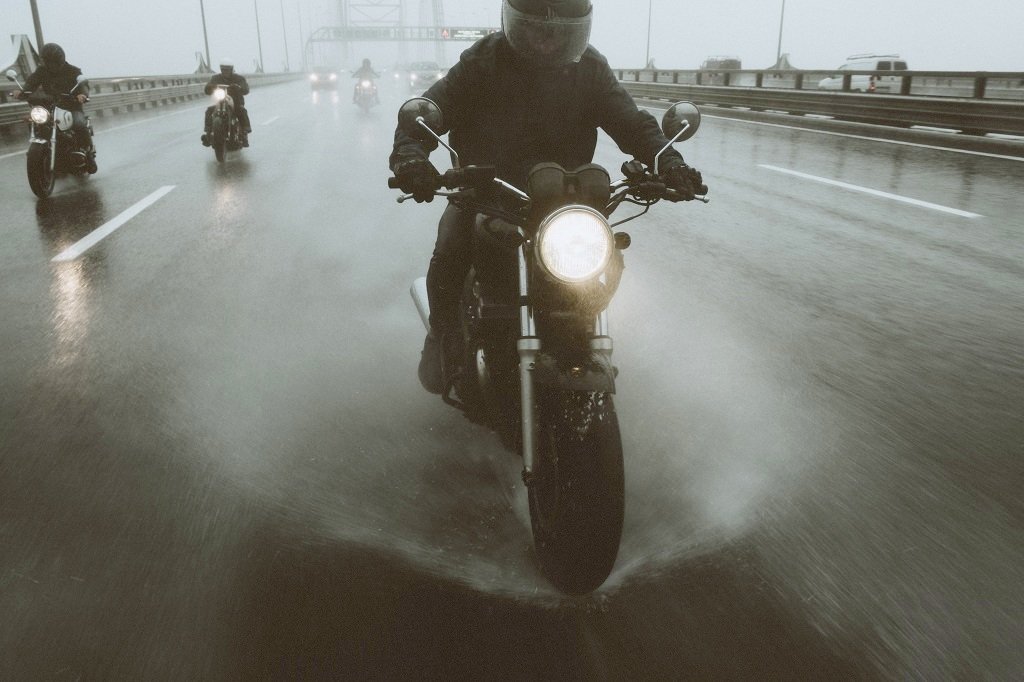
So, how do you measure the tread depth of your motorcycle tires? It’s pretty simple. All you need is a penny.
Place the penny into the tread of your tire at any point. If you can see the top of Lincoln’s head, your tread depth is less than 4/32 of an inch, and you need to replace your tire. The tread depth is fine if you can’t see the top of Lincoln’s head.
Another way to measure the depth is using a tread depth gauge. You can find these at most auto parts stores.
2. Tire Pressure
Having the correct tire pressure is crucial to your motorcycle’s performance and safety. So, what is the ideal tire pressure of a bike, and what happens for incorrect pressure?
For starters, it’s essential to check your motorcycle tires regularly. It will help you to catch any issues early on and avoid any potential problems down the road.
When it comes to tire pressure, there is no “one size fits all” answer. The ideal tire pressure depends on several factors, including the motorcycle model, the tire type, road condition, loads you are carrying, and riding style.

That being said, there are general guidelines that you can follow. The recommended pressure is between 28 and 40 PSI for most motorcycle tires, including tubeless tires. You may want to go even higher for heavier motorcycles or those carrying a lot of weight.
So what happens if you don’t have the correct tire pressure? If your tires are underinflated, it can cause them to overheat and potentially blow out.
On the other hand, overinflation causes them to wear down prematurely. It can also make your motorcycle less stable and more challenging to handle.
Use a tire pressure gauge to check the pressure of each tire. The ideal pressure will vary depending on the type of tire, so consult your owner’s manual or the tire manufacturer for guidance.
You should check the tire pressure regularly. The best way to do this is with a tire pressure gauge available at most auto parts stores. Remove the tire’s valve cap and press the gauge onto the valve, giving you a reading of the pressure.
Find out more about checking motorcycle tire pressure.
3. Sidewall Cracks
When it comes to motorcycle tires, dry rot or sidewall cracks can be a real problem. But what causes them, and how dangerous are they for road safety?
Sidewall cracks can happen for many reasons. One common cause is simply age and wear and tear. As tires age, their rubber compound loses elasticity and becomes more susceptible to cracking, primarily if not correctly maintained.
Exposure to the sun also accelerates the deterioration. UV rays can damage the structure of the tire, causing it to become dry and brittle.
If you live in an area with high humidity, that can also contribute to dry rot. Humidity causes the tire to expand and contract, leading to cracking.
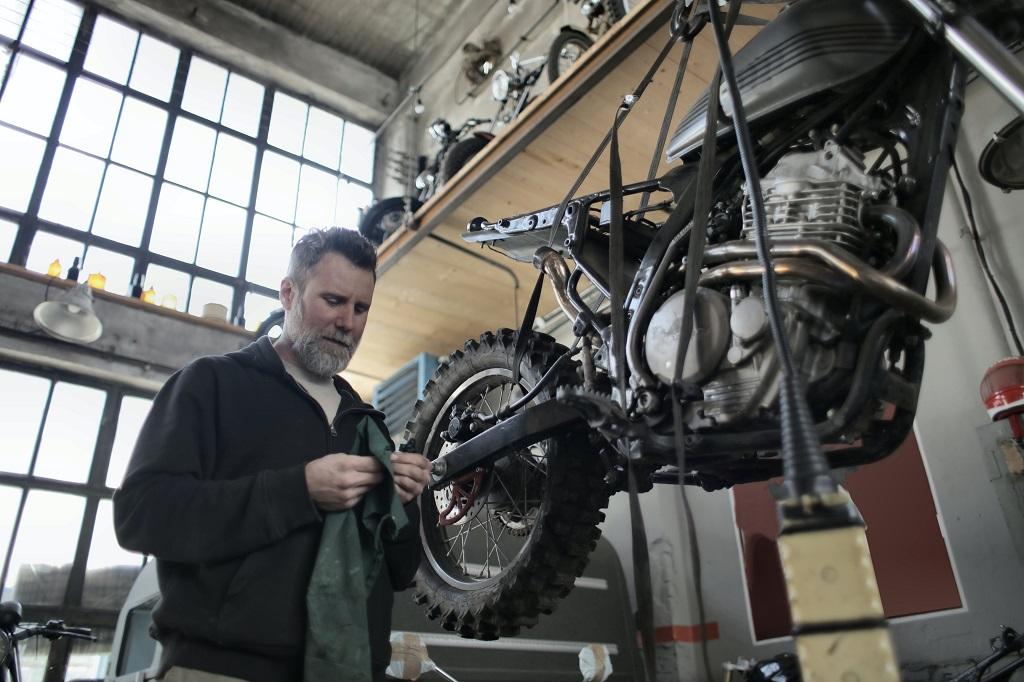
So, are sidewall cracks dangerous?
Yes, they can be. If a crack is severe enough, it can cause a blowout, which can be very dangerous. Even if a blowout doesn’t occur, a cracked tire can still lose air, leading to a loss of control.
If you find cracks in your tires, you’ll need to decide whether or not they’re severe enough to warrant a replacement.
Are the cracks just on the surface? You can probably get away with just patching them up. However, it’s best to replace the tire if they are deep or wide.
4. Bulges or Blisters
Bulging on the sidewall happens because of impact damage, such as hitting a pothole or running over road debris.
Impact damage weakens the tire’s structure, causing it to bulge out. It can eventually lead to a blowout, so you must check your tires regularly for any signs of damage.
When your tire hits something hard, it can cause the sidewall to bulge out. Swelling can also happen if you hit a curb or other object while riding.
Riding on damaged roads can also cause tire blisters. If the road surface is uneven or has large cracks, it can stress your tires and cause swelling. It’s especially true if you’re riding on a lot of gravel or other loose materials.
SEE MORE: 7 Tips to Prevent a Flat Motorcycle Tire
If you suspect that your tires are starting to bulge, it’s vital to have them checked out by a professional. They can help you determine the cause of the problem and recommend the best course of action. In some cases, you may need to replace your tires.
How do you prevent such blisters in the first place?
Well, try to ride on well-maintained roads. Avoid potholes and watch out for loose gravel. Take it slow on rough roads, and be careful of obstacles. Pull over and inspect your tires immediately if you hit something.
Also, regular maintenance is critical. Inspect your tires frequently for any signs of damage, and make sure they’re properly inflated. It will help reduce the risk of sidewall bulges and other problems.
5. Uneven Wear
Uneven tire wear can be dangerous. It leads to poor bike handling, making it more difficult to control. Also, you can face premature tire failure, which can be extremely dangerous while you’re on the road.
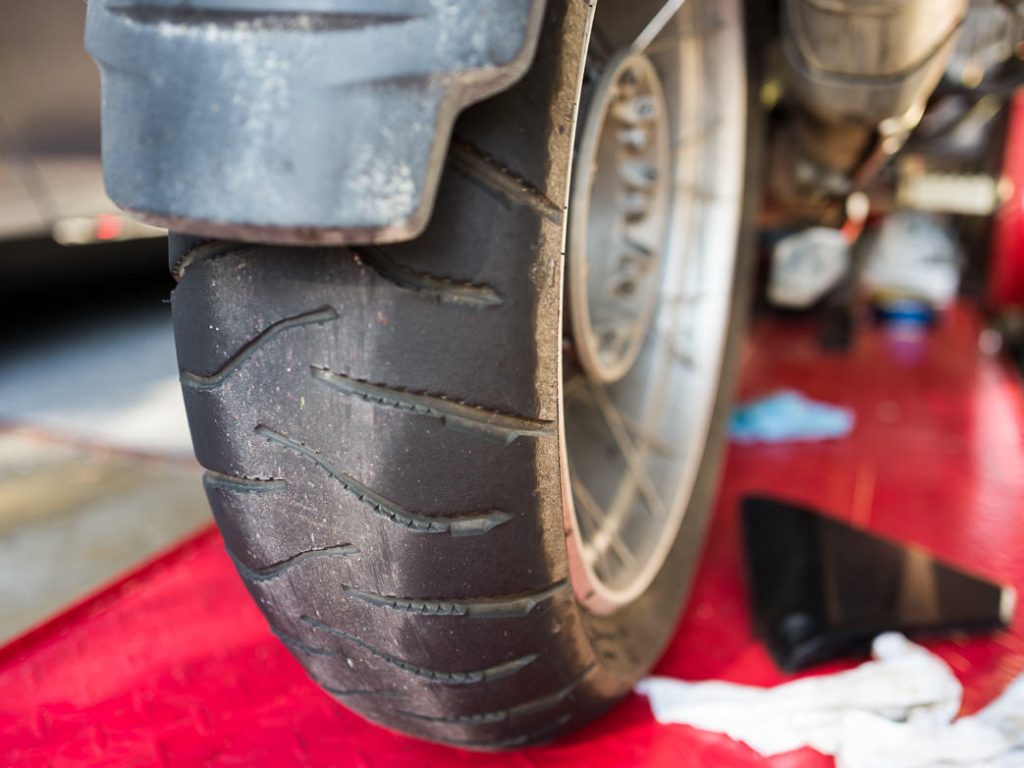
So why does uneven tire wear happen in the first place? It could be because of wheel misalignment. It’s something that you should have checked by a professional if you suspect it might be the case.
Another common reason is the tire’s overinflation or underinflation. It can lead to poor handling and premature tire failure, so it’s essential to ensure that your tires are inflated to the correct pressure.
Finally, uneven tire wear can also be caused by riding on uneven surfaces. You can’t avoid it, but it’s necessary to stay alert. If you find that your tires are wearing unevenly, have them checked out by a professional to ensure there isn’t anything more serious going on.
Need a visual demo of the checklist? Watch this video.
The Final Words
Checking motorcycle tires is a quick and easy way to help keep your bike in good condition. By taking the time to do this simple task, you can help avoid problems down the road.
FAQs about Checking Motorcycle Tires
How often should I check my motorcycle tires?
You should check your motorcycle tires at least once a month and before longer rides. Tires deteriorate over time, so more frequent checks are recommended.
What should I look for when inspecting motorcycle tires?
Check for proper tire inflation, uneven tread wear, cracks or cuts in the tire, abnormal tread wear, sidewall damage, and proper tread depth.
What is the proper tire pressure for motorcycle tires?
Recommended tire pressure for motorcycle tires is listed on a label, typically on the frame by the handlebars or on the tire itself. Follow the manufacturer’s recommended cold tire inflation pressure, measured when the tire is at ambient temperature.
How do I know if my tires have enough tread?
Motorcycle tires are considered worn out when the tread depth is 2/32 of an inch or less. You can easily measure tread depth with a tread depth gauge. Another indicator is when the tread wear indicators – raised sections in the tire grooves – become visible.
What are some signs my tires need to be replaced?
Along with low tread depth, other signs your tires need replacing include dry rot cracks, bulges or bumps, exposed tire cords or fabric layers, uneven wear not correctable by air pressure adjustment, and age – replace tires over 6 years old.

